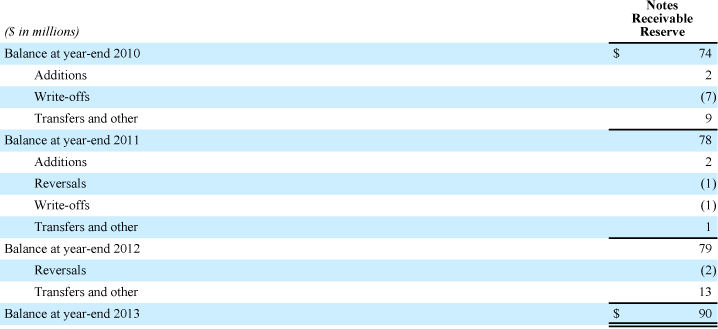 Financial Information
Financial Information
9. NOTES RECEIVABLE
The following table shows the composition of our notes receivable balances (net of reserves and unamortized discounts) at year-end 2013 and 2012:

We classify notes receivable due within one year as current assets in the caption “Accounts and notes receivable” in our Balance Sheets.
The following table shows the expected future principal payments (net of reserves and unamortized discounts) as well as interest rates and unamortized discounts for our notes receivable as of year-end 2013:

The following table shows the unamortized discounts for our notes receivable as of year-end 2013 and 2012:

Senior, Mezzanine, and Other Loans
Generally, all of the loans we make have similar characteristics in that they are loans to owners and operators of hotels and hospitality properties. We reflect interest income for “Senior, mezzanine, and other loans” in the “Interest income” caption in our Income Statements. At year-end 2013, our recorded investment in impaired “Senior, mezzanine, and other loans” was $99 million. We had a $90 million notes receivable reserve representing an allowance for credit losses, leaving $9 million of our investment in impaired loans, for which we had no related allowance for credit losses. At year-end 2012, our recorded investment in impaired “Senior, mezzanine, and other loans” was $93 million, and we had a $79 million notes receivable reserve representing an allowance for credit losses, leaving $14 million of our investment in impaired loans, for which we had no related allowance for credit losses. Our average investment in impaired “Senior, mezzanine, and other loans” totaled $96 million during 2013, $94 million during 2012, and $89 million during 2011.
The following table summarizes the activity for our “Senior, mezzanine, and other loans” notes receivable reserve for 2011, 2012, and 2013:

Past due senior, mezzanine, and other loans totaled zero at year-end 2013 and $7 million at year-end 2012.
